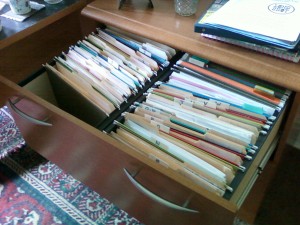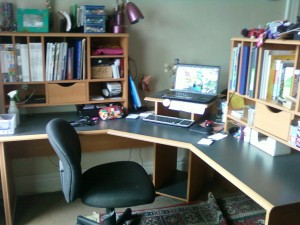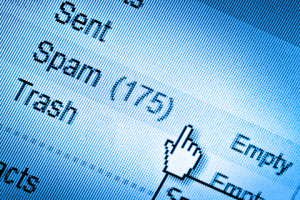 It was almost a year ago that I set out to purchase a file cabinet for my home office. I have lamented many times about not having quite enough to buy my file cabinet, whether it's not having enough points, or not having enough money, or not having the time to pick one out. Well, no more worrying. No more lamenting. No more wishing and wanting. I finally have my file cabinet!
It was almost a year ago that I set out to purchase a file cabinet for my home office. I have lamented many times about not having quite enough to buy my file cabinet, whether it's not having enough points, or not having enough money, or not having the time to pick one out. Well, no more worrying. No more lamenting. No more wishing and wanting. I finally have my file cabinet!
I've Been Needing One for Well Over a Year
Ever since I transitioned to a virtual office toward the end of 2012, I've needed a file cabinet. I didn't have one in my home office, so my files were in piles in a corner of my office, collecting dust. My cat even peed on the pile once and I had to throw a whole bunch of files away since there was no way I was going to get the pee out of the paper (and I didn't want to encourage him to pee outside the litter box). Not only did have to throw away a few files (fortunately, none of them were too important), but when they were in piles, the files and their contents were useless. It was too much trouble to dig through them to find what I needed, and since they weren't organized, there wasn't any point in creating new files or adding to them.
But, That is All Over
 I only spent $90 on this file cabinet, which was at the top of my range but I think I got a good deal. I bought a wooden file cabinet just like I wanted. Even thought it only has two drawers, it functions like four-drawer file cabinet, as shown in the picture on the left. It even came with about 50 extra file folders that I wasn't expecting. The previous owner threw them in for free. I didn't need them, but I couldn't say no because the folders were in one of the drawers ready to go with me. I didn't want to tell the owner to take them out and waste more of their time.
I only spent $90 on this file cabinet, which was at the top of my range but I think I got a good deal. I bought a wooden file cabinet just like I wanted. Even thought it only has two drawers, it functions like four-drawer file cabinet, as shown in the picture on the left. It even came with about 50 extra file folders that I wasn't expecting. The previous owner threw them in for free. I didn't need them, but I couldn't say no because the folders were in one of the drawers ready to go with me. I didn't want to tell the owner to take them out and waste more of their time.
Anyway, I organized my files and created several new ones to accommodate more important papers and articles that I've accumulated over the years (such as the lease on my apartment and the adoption papers for my cat). I accumulated so much that I've run out of manila folders. It's a good thing I found a file cabinet that's essentially four drawers instead of two. It looks like that I'll be needing the extra room, and I'm excited to fill it with all kinds of neat stuff. I pondered on whether or not to get a two-drawer file cabinet or a four-drawer file cabinet. I eventually settled on a two-drawer because I didn't think I would have enough room for four-drawer, so I was really happy to find this cabinet in such good condition.
Now I Have a Clean Desk
 Since I went without a file cabinet for so long, papers started piling up on my desk. I had two big piles, one on each end of the desk (the clean "after" version is shown on the right. I didn't think to take any pictures until after I had cleaned it up, so I don't have a shot of the "before" version). I also had papers tucked into folders and piled up in other parts of the office. Once I started cleaning everything up, I found so many bank statements (both opened and unopened) it wasn't even funny.
Since I went without a file cabinet for so long, papers started piling up on my desk. I had two big piles, one on each end of the desk (the clean "after" version is shown on the right. I didn't think to take any pictures until after I had cleaned it up, so I don't have a shot of the "before" version). I also had papers tucked into folders and piled up in other parts of the office. Once I started cleaning everything up, I found so many bank statements (both opened and unopened) it wasn't even funny.
But my desk is much cleaner, which should help me to get much more done. They say that a cluttered desk hinder productivity, so perhaps my uncluttered desk will mean an uncluttered mind and I will have an easier time getting work done. After all, I can now use more of my desk and use it better since the space isn't taken up by random papers anymore.




